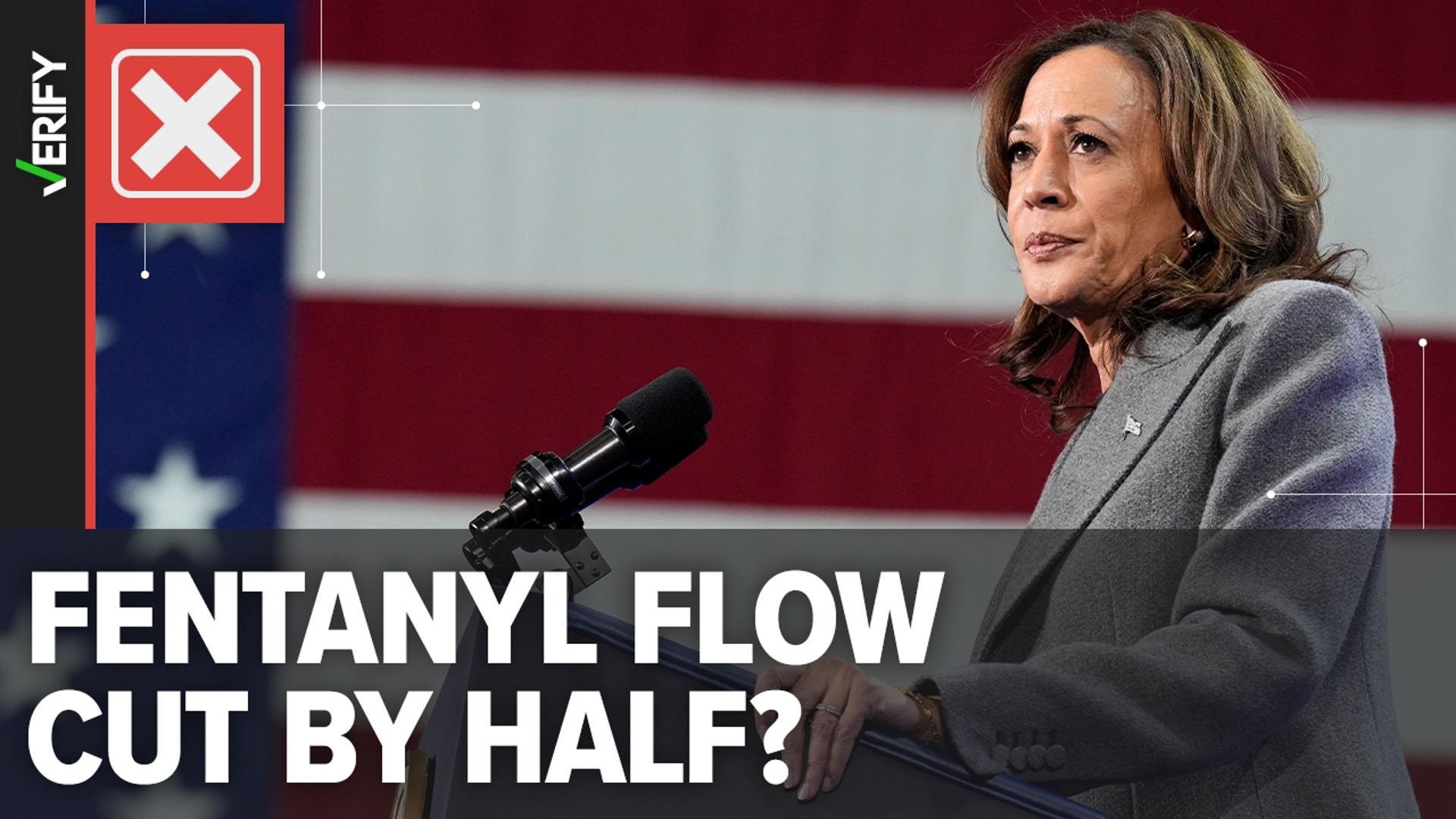As the presidential election approaches, fentanyl has emerged as a key issue, with candidates spotlighting the opioid crisis and how the drug has entered the country.
During an Oct. 7 interview with “60 Minutes,” Vice President and presidential nominee Kamala Harris was asked about immigration at the border and said under the President Joe Biden-Harris administration, “we have cut the flow of illegal immigration by half, we have cut the flow of fentanyl by half.”
The next day while joining “The View,” Harris made a similar claim, saying the current administration has seen the “intake of fentanyl reduced by half.”
VERIFY looked into whether there was any truth to this claim.
THE QUESTION
Has the flow of fentanyl been cut in half during the Biden-Harris administration?
THE SOURCES
- U.S. Customs and Border Protection drug seizure data
- An email to VERIFY from the Harris campaign
- New York University Associate Professor Joseph Palamar
- Jonathan Caulkins, a Carnegie Mellon University professor
- High Intensity Drug Trafficking Areas Program (HIDTA) 2024 report to Congress
- KFF, a health policy organization
- Drug Enforcement Administration (DEA)
THE ANSWER
No, the flow of fentanyl hasn’t been cut in half during the Biden-Harris administration. There's no way to know whether the flow of fentanyl has been cut in half because there is limited data on how much fentanyl is entering the country.
WHAT WE FOUND
While drug seizures have more than doubled at the border since Biden took office, there isn’t sufficient data to support claims that the total flow of fentanyl in the U.S. has been cut in half.
“No one knows how much the flow of fentanyl has been cut because we don’t know how much has been coming in. We have seizure data from a couple of law enforcement agencies, but we don’t know how many people use and how many are acquiring access to the illicit drug,” Joseph Palamar, a New York University associate professor who studies drug use and public health, told VERIFY.
A Harris campaign aide told VERIFY that during these interviews, the “vice president was speaking to doubling of fentanyl seized at the border,” and referred us to U.S. Customs and Border Protection (CBP) federal seizure statistics.
According to CBP, fentanyl seizures at the border more than doubled from 11,200 pounds in 2021 to 27,000 pounds in fiscal year 2023, which runs from October to September. According to 2024 data through August, CBP had seized 19,681 pounds.
Palamar explained the number and total weight of fentanyl seizures at the border is actually much smaller than the number and total weight of fentanyl seizures in the U.S. Available data shows that in addition to what the CBP reports seizing at the border, about 47,000 pounds of fentanyl was seized by police throughout the U.S., according to Palamar.
“Cutting the fentanyl supply ‘in half’ does not appear to be based on data at all because the data doesn’t exist,” Palamar said.
Jonathan Caulkins, a professor with Carnegie Mellon University who also studies drug policy, told VERIFY there is no information – or fixed relationship – between the amount of fentanyl shipped into the U.S. and the amount seized, therefore “no data or trend in seizures can ever tell you for sure what is happening with the amount that gets through.”
Caulkins said if the amount of seizures are going up across the U.S., it’s safe to assume that means more fentanyl – not less – is actually coming into the U.S. There is no fixed proportion or constant number of seizures, so the data is incomplete.
“Definitely can’t conclude that arrivals are down by 50% or any other specific figure. And if we had to guess, we’d probably be more likely to guess that amounts getting through went up, not down,” Caulkins said.
Palamar also said given the death toll linked to fentanyl remains high, it is “more likely that the amount of fentanyl entering the U.S. actually increased, and that law enforcement simply tried to keep up with the increase.” KFF, a health policy organization, says while provisional data from the Centers of Disease Control and Prevention (CDC) “shows a decline in opioid deaths in 2023, the death toll remains much higher than just a few years ago, keeping this issue [opioid deaths] in the spotlight.”
The Drug Enforcement Administration (DEA) has also observed that “no DEA office reported that fentanyl is less available or more expensive, either of which would point to a decrease in the supply.”

